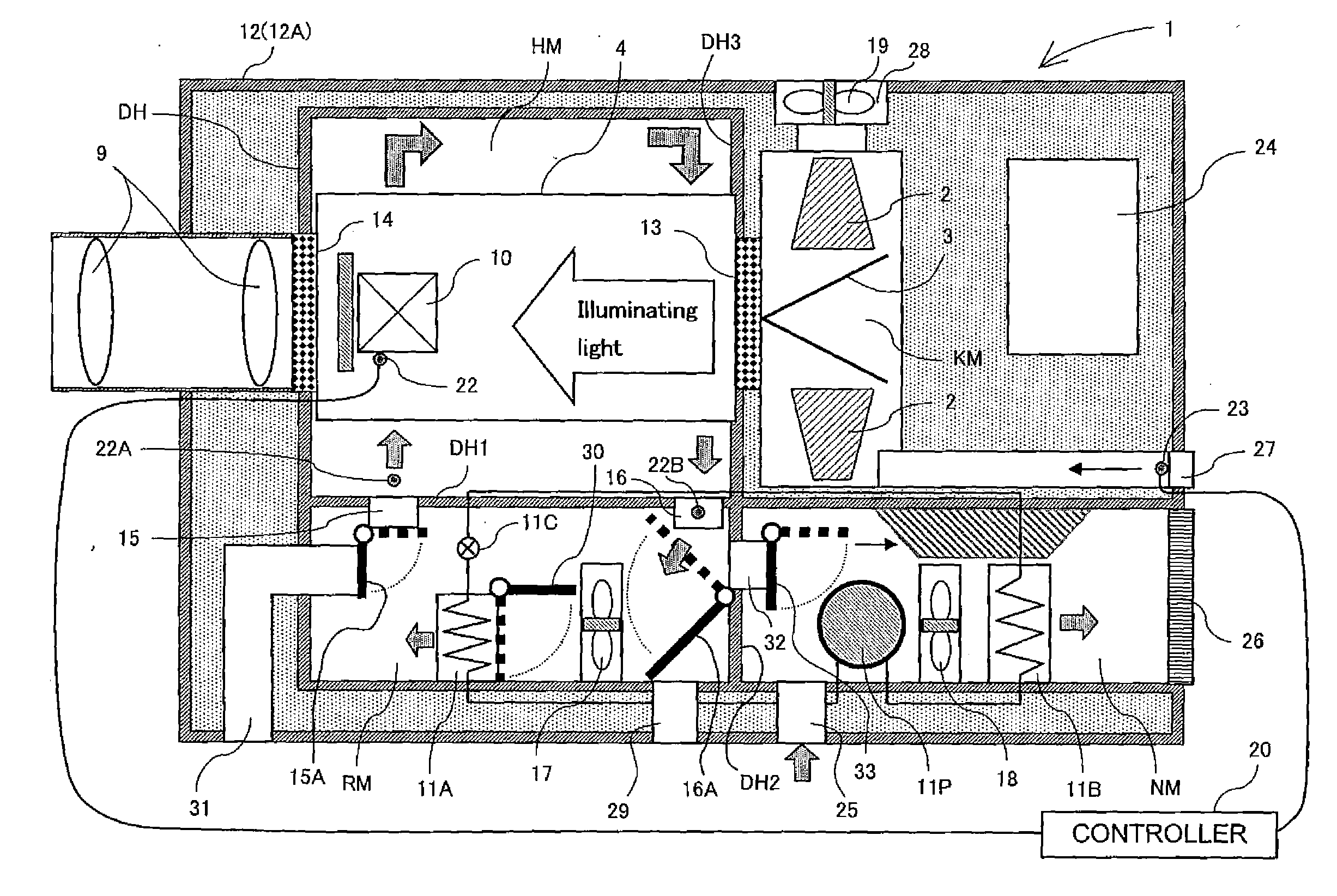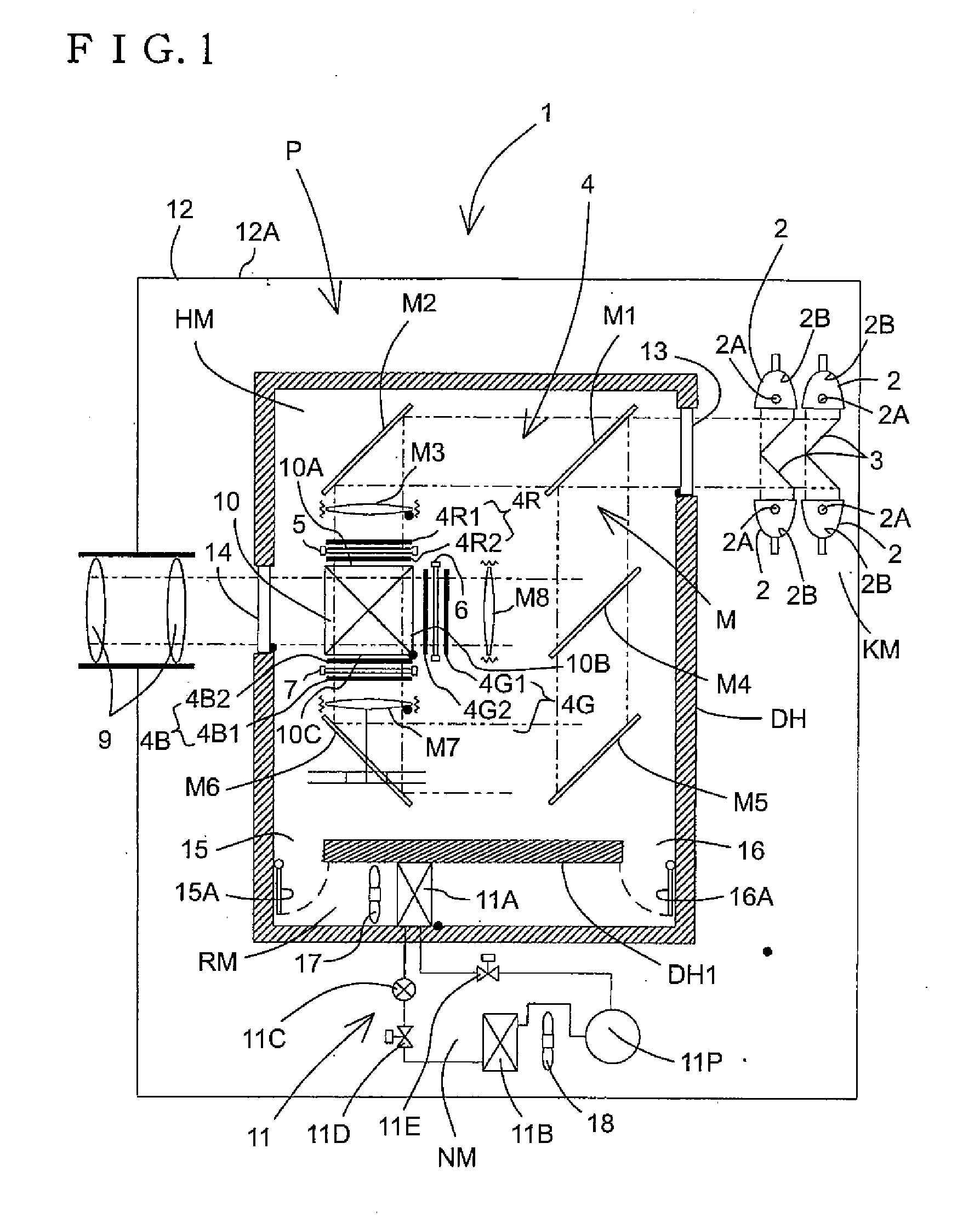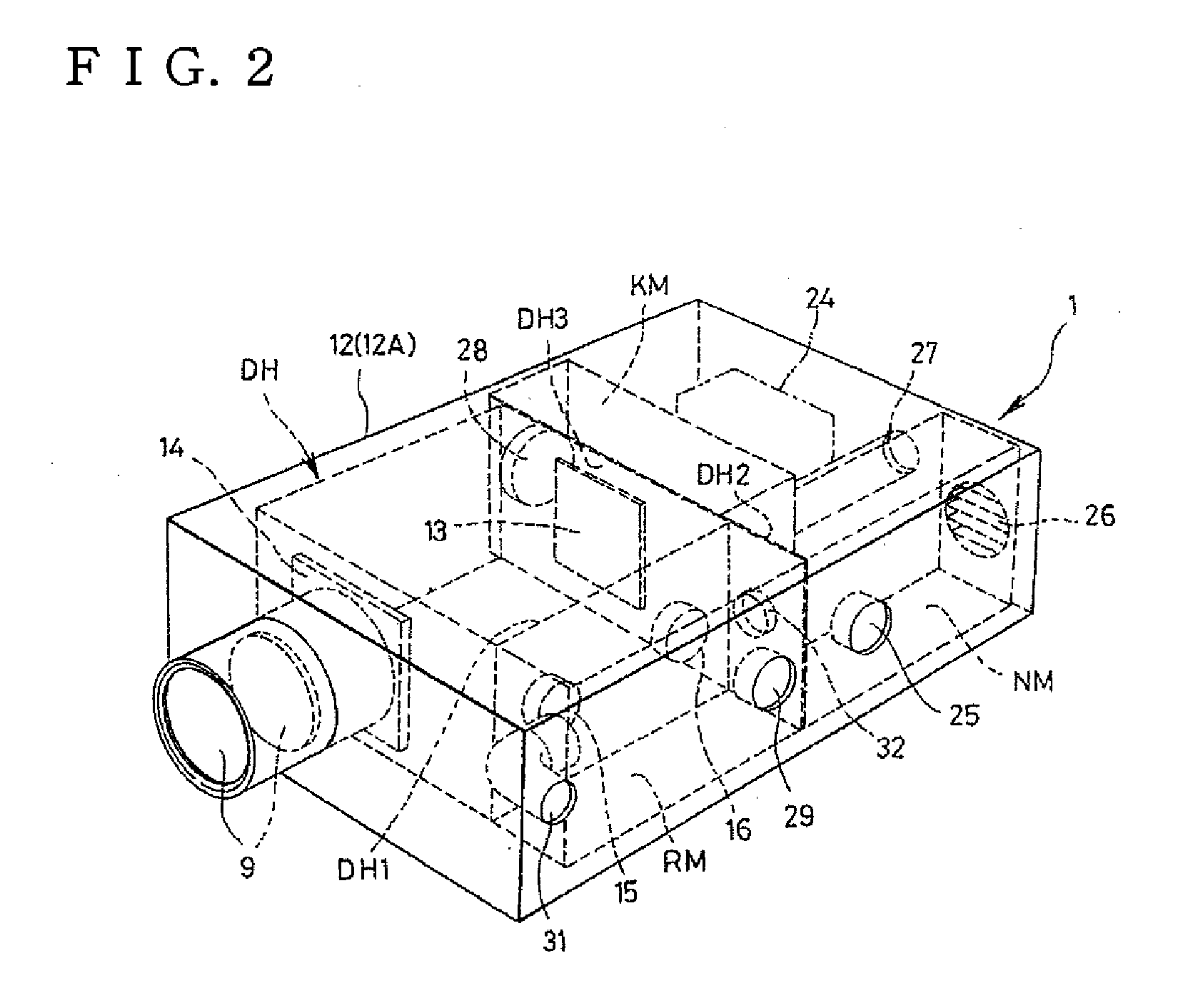Projector apparatus
a projector and apparatus technology, applied in the field of projector apparatus, can solve the problems of increased power consumption, inability to obtain sufficient heat release effect, and inability to obtain desired projection light image, so as to achieve effective cooling, prevent dew condensation, and enhance the energy-saving effect.
- Summary
- Abstract
- Description
- Claims
- Application Information
AI Technical Summary
Benefits of technology
Problems solved by technology
Method used
Image
Examples
embodiment 1
[0131]FIG. 1 is a view schematically showing a functional configuration of a projector apparatus according to the present invention; FIG. 2 is a perspective view of one form of layout structure of each chamber in a box unit 12 according to the present invention; FIG. 3 is a transverse plan view of the one form of layout structure of each chamber in the box unit 12 according to the present invention; FIG. 4 is a structural view of a cooling unit according to the present invention; FIG. 5 is a control block diagram according to the present invention; FIG. 6 is a control functional chart for an internal air circulation mode and an external air (ambient air) introduction mode by the cooling unit; FIG. 7 is a functional chart for after-treatment operation (drying operation) after cooling operation; FIG. 8 is a relationship diagram between external air temperature and optical device part temperature; FIG. 9 is a view showing the state of each damper mechanism in the external air (ambient ...
embodiment 2
[0166]Embodiment 2 is differed from Embodiment 1 in the structure for introducing external air (ambient air) into the optical chamber HM. In Embodiment 2, in order to directly introduce the external air (ambient air) into the optical chamber HM without passing through the cooling chamber RM, an external air inlet port 40 and an external air outlet port 41 are formed in the adiabatic wall DH opposite to the cooling chamber RM of the adiabatic walls of the optical chamber HM. Therefore, the vent port 32 for mutually connecting the cooling chamber RM and the radiation chamber NM is not present on the heat insulating partitioning wall between both the chambers, and the damper mechanism 33 is thus unneeded. The damper mechanism 30 is also unneeded.
[0167]In FIGS. 18 and 19 having the same form of layout structure of each chamber as FIG. 3, a function part having the same form as in the configuration of Embodiment 1 is shown by the same reference number. FIG. 18 shows the state of each dam...
embodiment 3
[0170]In Embodiment 1 and Embodiment 2, the optical chamber HM is composed of a single cooling space capable of housing all of the prism 10, and the liquid crystal panels and polarization plates disposed respectively in opposition to three faces (incident surface of image light of red R, incident surface of image light of green G, and incident surface of image light of blue B) of the prism 10, so that all of the prism 10, the liquid crystal panels and the polarization plates are cooled by allowing the cold air introduced through the cold air inlet port 15 to flow into this cooling space (optical chamber HM).
[0171]Embodiment 3 adopts a distributed cooling system of the optical device 4, differed from this cooling system of the optical device 4 within the single cooling space. In this distributed cooling system, as shown in FIG. 22, three branched cold air passages are constituted to branch the cold air introduced through the cold air inlet port 15, and each space for housing one face...
PUM
 Login to View More
Login to View More Abstract
Description
Claims
Application Information
 Login to View More
Login to View More - R&D
- Intellectual Property
- Life Sciences
- Materials
- Tech Scout
- Unparalleled Data Quality
- Higher Quality Content
- 60% Fewer Hallucinations
Browse by: Latest US Patents, China's latest patents, Technical Efficacy Thesaurus, Application Domain, Technology Topic, Popular Technical Reports.
© 2025 PatSnap. All rights reserved.Legal|Privacy policy|Modern Slavery Act Transparency Statement|Sitemap|About US| Contact US: help@patsnap.com



